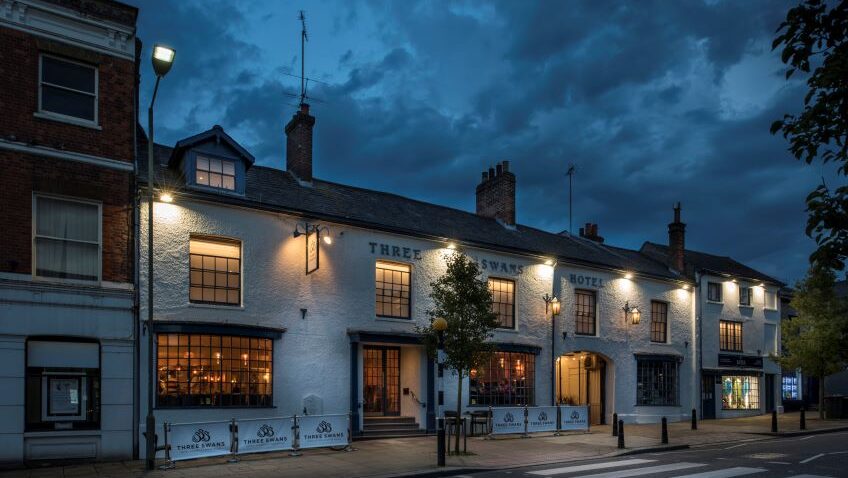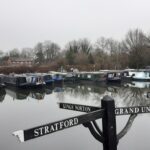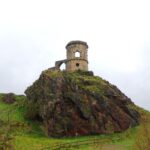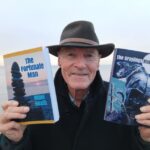It was definitely a case of sliding doors when my walking companion and poet Peter Gibbs and I set out from Reading on a bitterly cold January morning to walk the sixty- nine miles to Bradford on Avon.
It seemed like a disaster when we were soon paddling along the towpath for quite long sections through flood water overspilling from the River Kennet and had been told by a jogger in soggy trainers that the way ahead was impassable for those on foot.
But had we not been delayed, we might never have met seventy years young identical twins Peter and Paul Iremonger, known to all their friends as “The Bro’s.”’
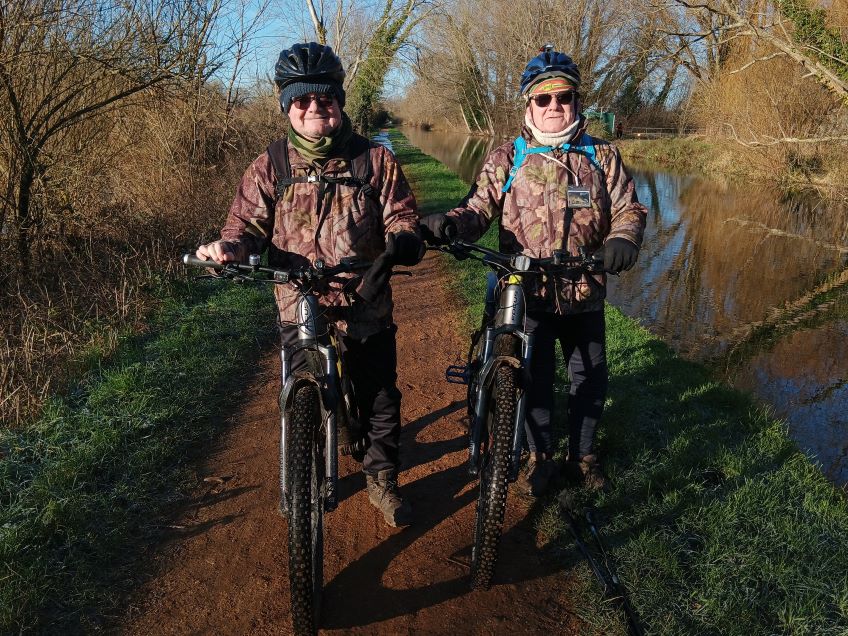
They are Reading and District Angling Association water bailiffs and were out on their sturdy bikes patrolling the waterway to make sure anglers had their permits.
Reading born and bred The Bro’s, who were both painters and decorators for Reading Borough Council for over thirty years, pointed out a nearby lane where we called a taxi to take us away from the flood waters and forward to Aldermaston Wharf.
From here we walked on past flooded fields sparkling in the sunlight to Woolhampton and popped into the Rowbarge Inn for a welcome pint.
Then a couple of miles further on we came upon Kathryn Duffle and her family pet Loki. Kathryn, aged 62, formerly worked in marketing and is now spending her life on her narrowboat called Buxton.
She has already navigated her floating home from Rickmansworth on the Grand Union Canal, along the River Thames through the heart of London, and into The Kennet and Avon.
“I just fell in love with the idea of spending my life touring Britain’s wonderful network of waterways after watching TV programmes like the one with Timothy West and Prunella Scales,” she explained.
A couple of miles further on we reached Midgham and left the canal to overnight at The Mercure West Grange Hotel.
I had developed a twinge in my right knee so instead of returning to the canal the following morning, we took a taxi into Newbury so reducing the mileage to our next overnight stop in Hungerford from fifteen to ten and it was just as well we otherwise we would probably never have met Tom Swafford.
He came slowly punting his way into this narrative later that morning as we approached the small canal side village of Kintbury.
For Tom’s converted Dutch barge has no engine and he has been punting his way slowly up and down the canal for the past ten years after giving up his market garden business.
Tom, aged 42, is marooned on the canal because without an engine his barge cannot enter any of the vital linking rivers, but now he is offering his services to The Canal and River Trust as a member of one of the maintenance teams, his speciality being brick laying.

But winding the clock back, it was 8am and four degrees below freezing on a glorious sunny morning when we rejoined the canal at the end of Newbury’s busy High Street and came upon a plaque to John Gould a founder member of the Kennet and Avon Trust and a former boatman.
It was his tireless commitment which led to the late Queen Elizabeth II reopening of the waterway in 1990 after many years of dereliction.
The waterway was originally opened in 1810 after sixteen years of construction, as a direct west to east trade link between London and Bristol and its crucial strategic position as a fall-back line if Nazi Germany had invaded southern England was evidenced by all the old pillboxes we came upon all along the route.
Not long after saying goodbye to Dutch barge punter Tom, we came upon The Dundas Arms, whose cellar had been flooded, and popped in for a pint before setting out on our afternoon walk into Hungerford.
The sun now much lower in the sky, cast a golden glow over the long dead bracken and the stonework of the old hump back canal bridges while overhead, solitary kites issued their whistling cry.
We stayed in Hungerford at the aptly named Three Swans Hotel which has been an inn since the 1680s and has been extensively updated and refurbished by its present owners The Coaching Inn Group.
Day three of the walk onward towards the Vale of Pewsey was bitterly cold and overcast with no one in sight for mile after mile.
Passing from Berkshire into Wiltshire, we walked over the top of the 502-foot-long Bruce Tunnel and stopped at The Royal Oak in Wootton Rivers for lunch.
I marvelled at the long streaks of white light now filtering through skies of grey and casting a silvery sheen-like glow over the ice-covered waters as we continued on our way to this day’s journeys end at the comfortable Mill House Air B&B not far from the canal in Pewsey.
It would have been a long walk to the nearest inn for dinner, so Kirsten our host kindly drove into the village and collected a takeaway.
We woke to a fabulous blue-sky dawn on what was to be the most scenically memorable day of the walk as we made our way around the rising slopes of the Wiltshire Downs with a chalky White Horse standing out on the hillside in the distance.
We overnighted at the comfortable Black Swan in the lovely old market town of Devizes and leaving early the following morning, soon came upon one of the most scenic landmarks of the walk, namely the famous Caen Hill flight of twenty-seven locks which lower the canal by 237 feet.
From the top we gazed out over a flat sunlit winter landscape to a distant line of hills and journeys end some twelve open country miles ahead.
Note
Nigel Heath and Peter Gibbs have an Amazon published Paths & Poetry a book covering their forty years of walking together and a combination of Nigel’s travel features and Peter’s poems so here is The Kennet and Avon Canal poem
Heron in the dull light
Here at start of day
Rising from canalside
Borne on wings of grey
Swans in faithful pairing
Drifting sure and slow
Dabbling by the edging reeds
Going with the flow
With no boats winter travelling
On stretches icy sheet
Frozen mud an obstacle
To snare unwary feet
Coots and moorhens scooting
Across the swirls of white
Under sky now cloudless
Dazzling bright sunlight
Passing red brick bridges
With countless locks between
Far off on rolling hillside
A White Horse edged in green
Drifting from warm cabins
Trails of pungent smoke
Hunkered down and cosy
The happy boating folk
Wood piles by the gang planks
With sawdust all around
Wheelbarrows and bicycles
Lie waiting on the ground
On the frosty towpath
Bootprints water-filled
January walking Westward
With breezes Arctic-chilled
And seeming ever present
On Brunel’s rail fast train
Passengers in comfort
While others take the strain.

